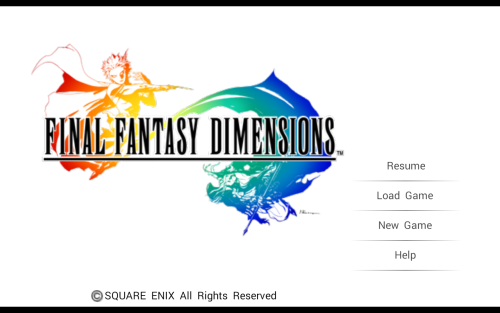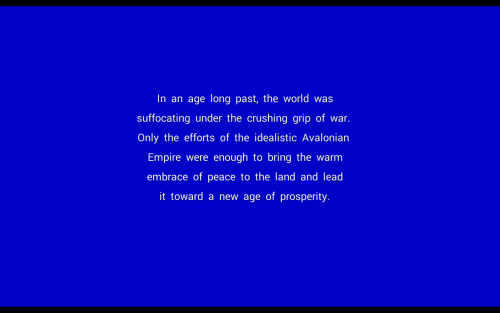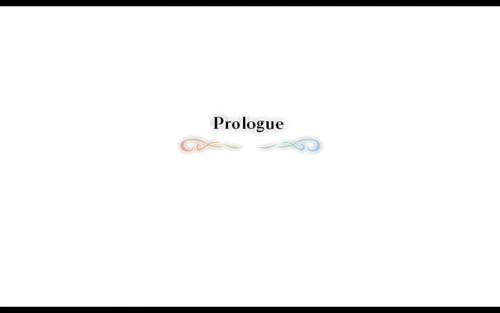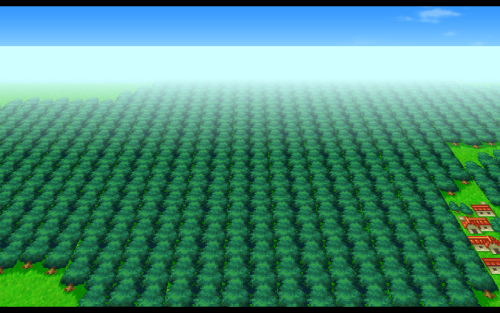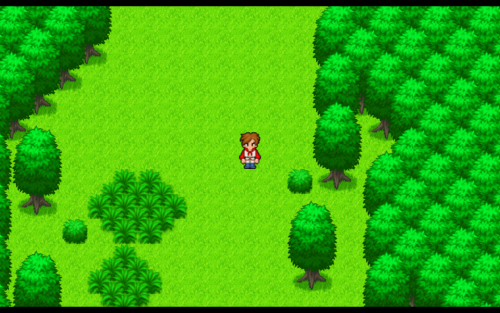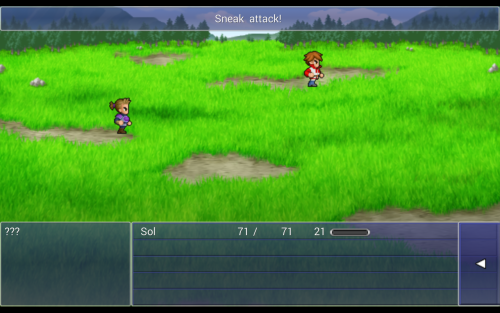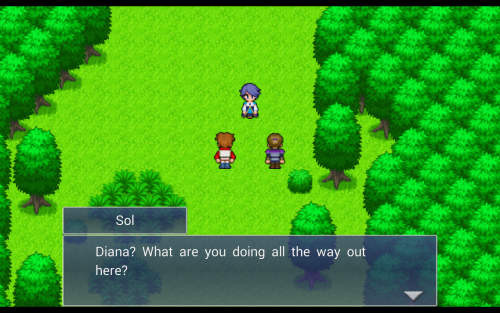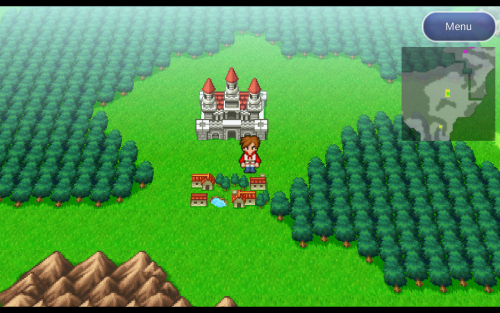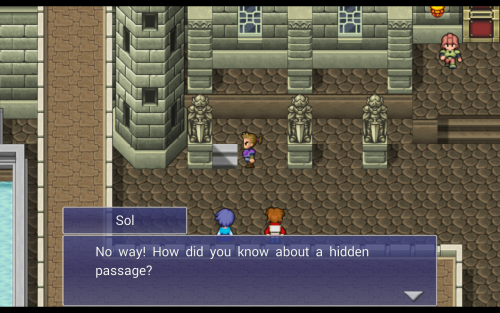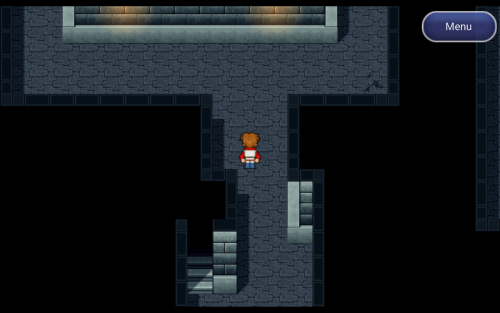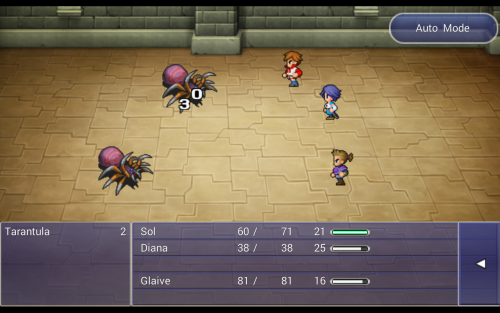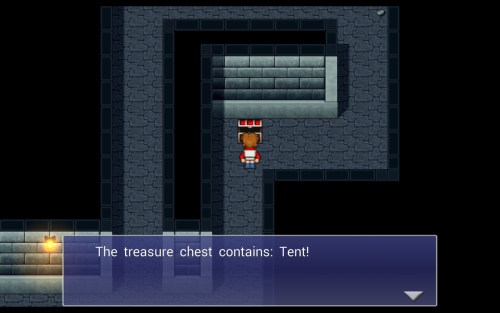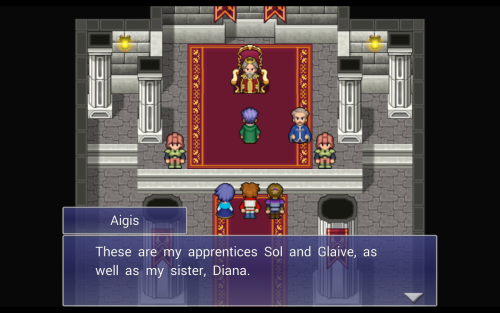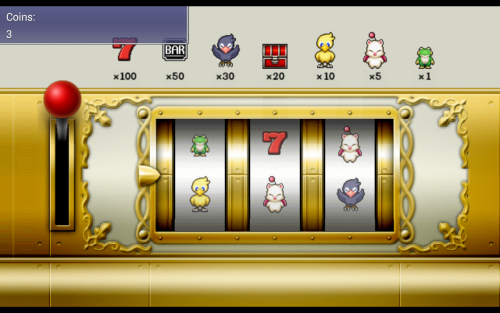I played through Final Fantasy XIII and already wrote about it here. In short, I can’t say I enjoyed the game. I can’t say I hated it either, but I definitely wouldn’t describe it as a great game. Final Fantasy Dimensions, on the other hand, feels like a proper Final Fantasy game throughout and I’m definitely having fun with this one.
What is Final Fantasy Dimensions?
Let’s start of by being short. Final Fantasy Dimensions is an actual, SNES-era styled, proper Final Fantasy game. I’m not messing with you, it really is.
It has a not-to-heavy story involving the four heroes of light, it has crystals, jobs and leveling. It has everything that makes a classical Final Fantasy game.
After what we’ve been getting from Square lately, this was a complete surprise for me.
A walk-through
Like many other Final Fantasies, the content in Final Fantasy Dimensions is unlocked as you progress through the story, so besides doing the usual walk-through, I’ll probably also have to skip ahead a bit to show some of the stuff the game has to offer.
But let’s not get ahead of ourselves, and go with “New Game” first.
A blue screen with a very plain-looking font describes the setting.
Then, there’s the flash of the title screen and the Prologue starts.
Is that Mode-7? I’m not sure it is, but it sure look like it.
There’s a mysterious figure listening to the sound of an airship. A few other characters and places are seen until we’re introduced to Sol, the game’s protagonist. Of course, we don’t know his name immediately and we get to name him, except there’s a six character limit for some reason.
Each actual game character get’s a introduction of their own.
He gets attacked by a friend of his, Glaive. It’s basically a sparing match.
Then we meet the third character, Diana. Glaive, Sol and her are childhood friends, about to go visit Diana’s older brother.
We’re introduced to the world map and the three types of movement available in the game.
The Default type sucks. You tap a part of the screen and a d-pad appears at that place. From that point, you can tap on the d-pad to move. If you don’t touch the screen for a while, the d-pad goes away and re-appears on a different spot when you tap the screen again.
The second type is Slide. You tap and hold on part of the screen and then drag in a direction to move that way. I was using this one through the game.
The third type, called Fix simply puts the d-pad on a fixed spot on the screen, emulating an actual controller.
All three aren’t that great, but type-2 seemed to have worked best for me. Ideally, we would just tap a spot on the map and the character would find their way there. That would make by far the most sense on a touch-based device, but hey, what do I know.
The party goes to a checkpoint where they’re supposed to meet Diana’s older brother.
The guard is a meanie and doesn’t want to let them in at first. Luckily, Aigis is there for the rescue. He’s Diana’s older brother and Swords teacher/instructor.
The gang heads back to town.
There’s a random battle along the way, but since I had auto-combat enabled, I didn’t get a chance to capture anything other than the rewards screen. There will be another one soon, so no need to show it here.
As we reach the town, Aigis is summoned to the castle by the King. Sol suspects Aigis is being recruited by the Empire, which is something he dreams of for himself. Diana is, of course, worried about her brother leaving. In the true Final Fantasy fashion, Sol being the protagonist is completely clueless about that.
Anyway, kids can’t really go with Aigis, but again, in the truest of Final Fantasy fashions, that doesn’t stop them from trying.
Before that, though…
Typical town in Final Fantasy Dimensions
Let’s just go through the list.
There’s usually a weapon shop, an armor shop, an item shop, an Inn and black and white magic shops . Sometimes, a few or those are combined into one, as is the case with the weapon and armor shop in Lux, the town we’re in right now.
Ok, we’re done with that.
Castle Lux
To get to the castle, we briefly exit to the world map and move a tile north.
The guards wont let the kids in, but Glaive knows of a secret passage.
How the two guards at the main gates don’t see 3 kids push a giant statue to the side to reveal a set of stairs is beyond me.
Bellow Castle Lux is our first dungeon. I’m still playing with auto-combat on, which is something I’ll explain soon.
We get through it relatively quickly and find a few treasures along the way, but nothing to write home about. Mostly, it’s stuff we could have bought in Lux, but this way, we get to save some money and the game rewards us for going in slightly weaker than we could have been.
In many dungeons, there’s a save point right before an important area or a boss. Also in many dungeons, there will be a chest containing a tent nearby, which is just convenient design. There wasn’t a save point in this one, but there was a tent. There was also no boss, because why would there be a boss monster in a completely normal castle?
We reach the throne room and again, in the Final Fantasy Fashion, we are discovered and the king, instead of being mad, sends a bunch of kids on an epic quest of world-saving proportions. To be fair, it was Aigis’ idea.
And that’s about where the game kind of starts, so we wont go further.
The mechanics
I already explained the movement system, so I want go into that.
Story design
The game is split up into chapters. Relatively early in the game, you are introduced to the game’s 8 playable characters and they almost immediately get separated into two groups – The Four Warriors of Light and Darkness. They do not join their forces again until much later in the story, so each chapter is first played by one team, followed by a different side of the story played by the other team.
They encounter the same major foes and all contribute to the same story resolution eventually, but until that actually happens, it’s sort of like playing two separate stories with some common parts.
In each chapter, the four warriors are joind by a major character/hero which they get to control during fights, but who isn’t actually a true party ember and doesn’t really participate in the Job mechanics the other characters do. As a reward for completing that chapter, you get to unlock that character’s job to be used by your other characters.
It’s a novel concept for Final Fantasy, but it works quite well.
Level design
We have a typical series of towns and dungeons.
The towns are simple enough and easily explored. It can be well-worth exploring them, though, since a lot of the decoration such as urns, pots or bookshelves can contain consumable items, equipment or even outright cash.
The dungeons are pretty straightforward and relatively simple to figure out.
There’s usually a single path you can follow to get to the end boss and out of the dungeon, but there are also branches you can explore to get treasures, usually in the form of equipment upgrades. Sometimes, progressing further or getting that extra special treasure involves pulling a switch or a lever to open a gate, but it’s never to hard to figure out.
Save points are placed just close enough that you get to use your good moves and spells without completely running out of mana before the next one, which is great. Usually in JRPG-s, you tend to save up your resources and rarely use anything other than the base attack in most fights.
Progressing through the world is also pretty straightforward. There’s the town you’re at right now and there’s the dungeon you need to get through next and it’s almost always completely clear where that is. As the game hits the later stages, the dungeons tend to chain, but there’s a steady supply of tends and cottages, so you’re never in danger of hitting a wall of any sort.
Every now and then, there will also be an optional dungeon, and almost always, it’s so you can get your next Summon. Nearing the end, there are other bonus dungeons, where you can get other stuff.
Optional content
There’s a decent chunk of it. There’s a mini-game/casino/chocobo-racing area which you can access relatively early during the story, but it gets upgraded later on.
There are also optional dungeons and mega-bosses you can tackle.
As far as I know, nothing is missable, which is always a plus, though there are a few things you can sort of miss and can only access again much later.
The job mechanics
You start the game with a set of common jobs. These are the Warrior, Monk, White Mage, Black Mage, Red Mage and Thief.
In addition to these, you steadily unlock additional jobs, of which the Warriors of Light have access to one set, while the Warriors of Darkness access the other.
After each battle, you collect EXP and AP. EXP is pretty self-explanatory, and AP is what slowly increases your job level. With each job level, the character’s stats while in that job increase and they also get to unlock a skill, which can be move, an active or a passive ability.
Regardless of the job you’re in, you also get a couple of slots to which you can assign abilities that character has unlocked in other jobs, so you can mix and match for quite a bit.
Each job also has a maximum level. You can increases that maximum all the way up to 20, but this costs JP (job points), which you collect by playing through the story, so within a single story, you can’t really max out everything.
However, once you have finished the story, you get to keep playing and collect more job points by re-attempting the final boss, collecting a special type of item, or beating some difficult enemies in an optional area of the game.
Auto-combat
This is a quality of life improvement I liked quite a lot.
You can tap a button on the battle screen which makes the combat run automatically and at a faster rate.
When you first do this, your characters will simply use their auto-attack. However, if you set your cursor to the Memory setting, they will instead repeat the last move you did. This means you can set-up your party to heal, use special attacks and basically beat most random encounter enemies into a pulp. It really, drastically reduces the tedium of random battles.
Once you reach a boss or a special encounter, the auto-battle option will switch off by default, so there’s no danger of an accidental game over.
Overall impression
The good
Maybe it’s due to how not good I consider the newer Final Fantasy games to be, but I really, honestly enjoyed my time with Final Fantasy Dimensions.
The mechanics are fun, the story is light but interesting and the characters aren’t annoying like they are in Final Fantasy XIII, for instance.
There’s plenty of stuff to do, plenty of optional stuff to tackle and plenty of reasons to strain from the main path, at least for a bit.
Final Fantasy Dimensions is not perfect, but it’s pretty damn good.
The not so good
As I said, it’s not perfect. There are a couple of things some, including myself, might not like as much.
A lot of the optional stuff is behind the final boss. I’m not sure why this was the case. It could have just as easily been moved to just before the final boss. I don’t know about other people, but for me, when I beat the story of a game and see the credits rolling, a switch flips in my head and suddenly I’m not that interested in to optional content anymore, or in the case of an RPG, in turning my characters into death machines.
Alba is a divider. Alba is one of the game’s characters. She’s rarely serious, constantly throws pop-culture and other references and keeps breaking the fourth wall. I don’t mind being reminded I’m playing a game, so I don’t mind Alba and find her kind of funny. Some people hate her, though, so I had to mention it.
There’s a noticeable lack of polish, especially in the graphical department. It makes it apparent that the game was made on a budget. The characters could use a few more animations, a screen or two could have been done better, etc. It’s really the same thing that happened with the Final Fantasy V and VI mobile remakes. It just doesn’t look as good as it could or should.
The I’m not sure what to think about this
The Cave of Dread. Here’s this game where you’re used to the amazing quality of life auto-combat feature and you’ve used and abused it for a dozen hours now.
Suddenly you’re in a dungeon where most of the enemies need to be killed with a cure spell to die for good. Not all of the enemies, though, so you can’t just switch everyone to a white mage and heal the enemies to death. Also, the boss in this dungeon is horrible.
Yeah, that dungeon exists and I hate it with a passion, but hey, it mixed things up and provided a challenge, at least.
Conclusion
Go play Final Fantasy Dimensions if you want to play an actual, proper Final Fantasy game. I did and I loved every unpolished moment of it.
